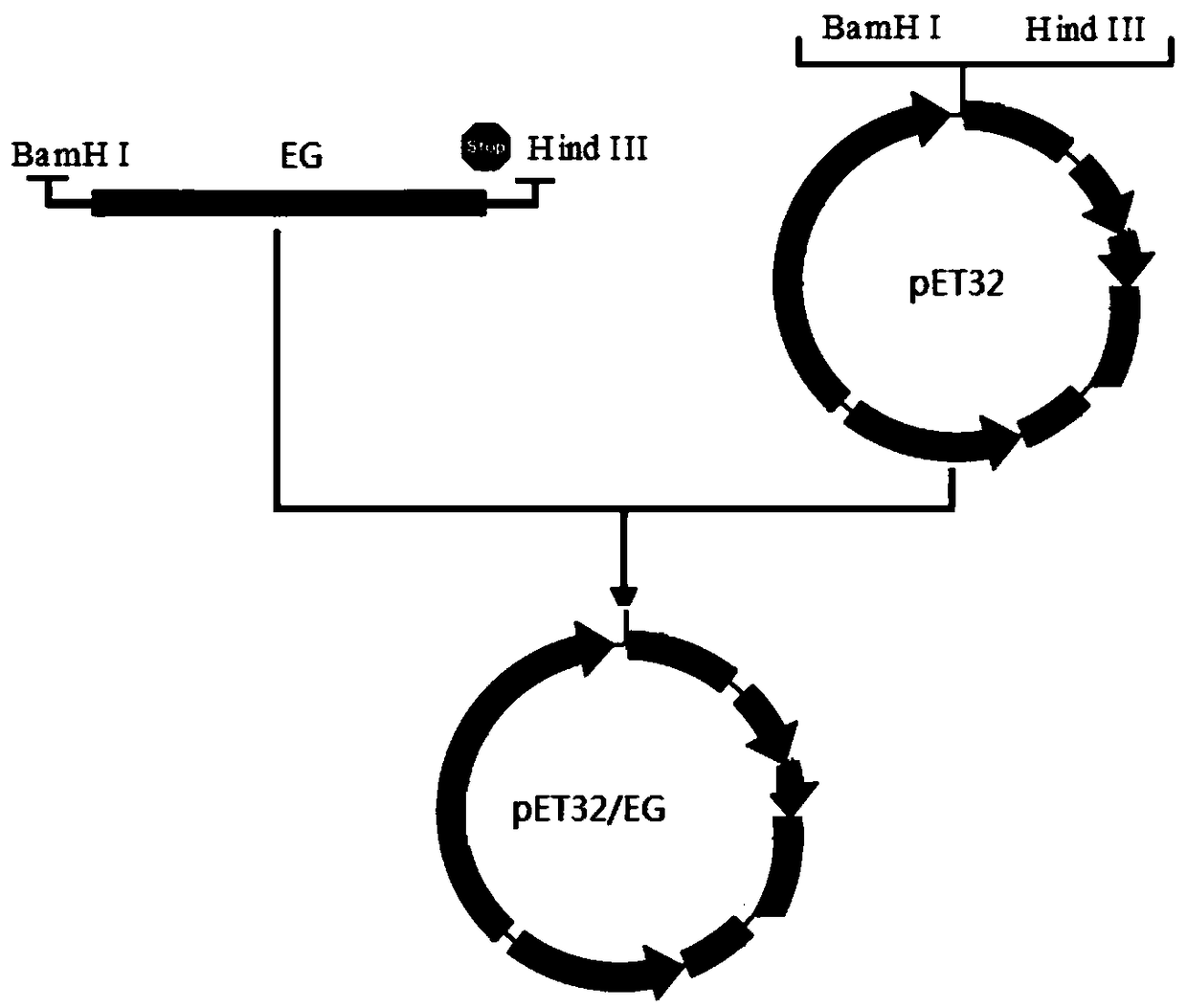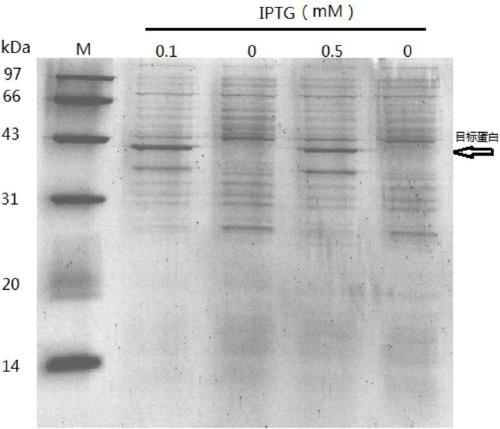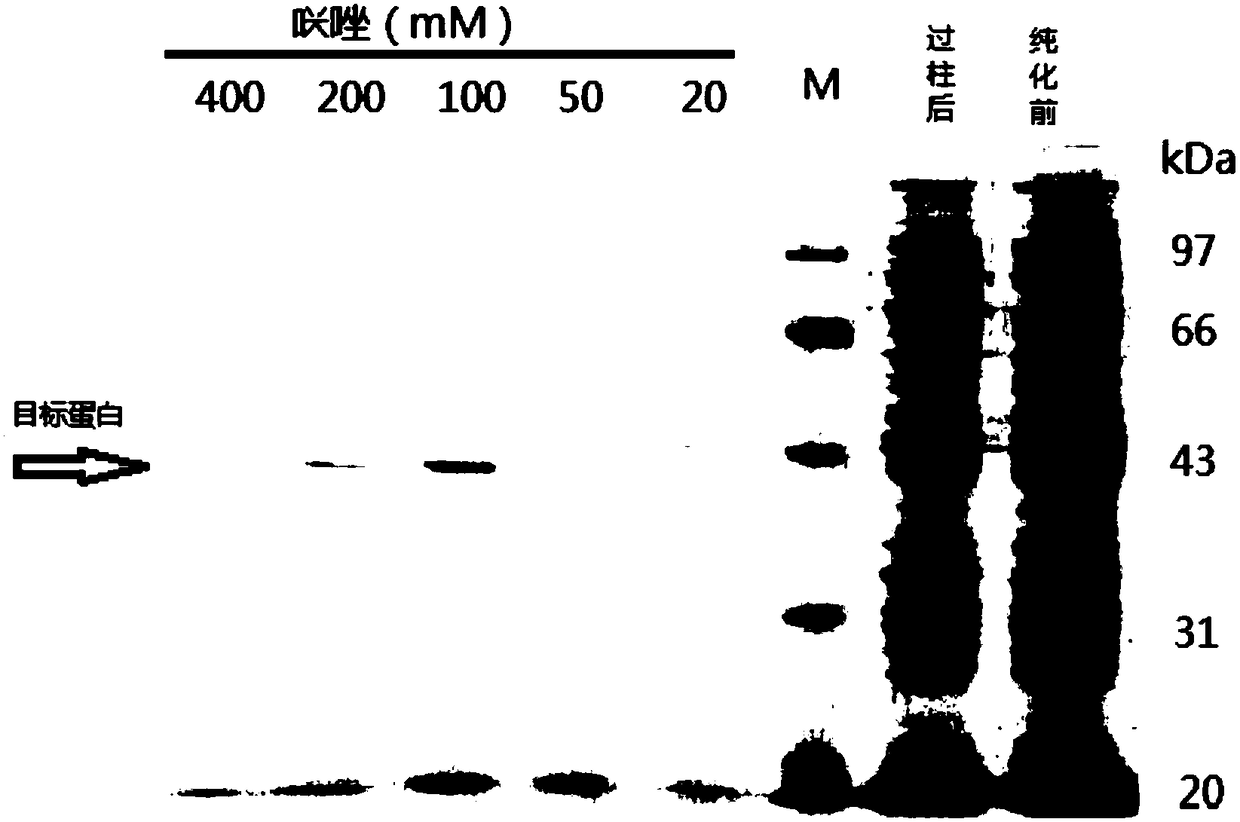A small molecular cellulose endocellulase gene, protein thereof and application thereof
A cellulose endonuclease and small molecule technology, applied in application, genetic engineering, plant genetic improvement, etc., can solve the problems of easy inactivation, unclear addition amount and method, and high cost
- Summary
- Abstract
- Description
- Claims
- Application Information
AI Technical Summary
Problems solved by technology
Method used
Image
Examples
Embodiment 1
[0068] This embodiment provides an optimized small molecule endocellulase gene (EG), the specific nucleotide sequence is shown in SEQ ID NO: 1 in the sequence listing, and the protein amino acid sequence corresponding to the gene is shown in the sequence listing Shown in SEQ ID NO: 2. The synthesized sequence has no sequence with a similarity of 70% in the NCBI database. It is optimized and synthesized according to the characteristics of E. coli expression.
[0069] Connect the above-mentioned optimized gene into the E. coli expression vector pET32 to obtain the recombinant vector. The recombinant vector verified by sequencing above is heat-shock transformed into the competent cells of the E. coli expression strain, and the corresponding resistant LB plate is coated and kept at 37°C Cultivate in a constant temperature incubator for 12 hours, and screen transformants, wherein the pET32 / EG vector is constructed as follows: figure 1 as shown, figure 1 It is a schematic diagram ...
Embodiment 2
[0083] This embodiment provides a method for preparing small molecule endocellulase, which specifically includes the following steps:
[0084] 1) Purification of the small molecule endocellulase of the fusion protein: the transformant of the Escherichia coli expression strain containing the recombinant vector pET32 / EG screened in step S1 was expanded and cultured (100 ml) in liquid LB medium at 37°C to OD 600 0.6, and induced with 0.1mM IPTG for 20-24 hours at 18°C, collected the thallines of the expressed bacteria after IPTG-induced expression, and resuspended the bacterium in 40ml of buffer A (containing 20mM Na 2 HPO 4 , 200mM NaCl, 10mM imidazole and 1mM protease inhibitor PMSF, pH 8.0), and then crushed with an ultrasonic breaker, crushing power 300W, crushing 2s, gap 6s, cycle 90 times; the crushed bacterial liquid was placed at 4°C , centrifuged at 30000g for 15min; the supernatant obtained by centrifugation was added to a nickel-affinity chromatography column pre-equ...
Embodiment 3
[0092] (1) The present invention adopts the glucose hexokinase (HK) method to measure the ability of the small molecular endocellulose hydrolysis carboxymethylcellulose sodium (CMC-Na) to produce glucose, and the hexokinase catalyzes glucose in the presence of ATP ( D-Glucose) phosphorylates it to generate glucose-6 phosphate (G-6-P), G-6-P and the coenzyme NAD generate NADH and 6-phosphogluconic acid under the action of glucose-6-phosphate dehydrogenase, The absorbance change of NADH at 340nm wavelength can be measured by spectrophotometry, and the concentration of glucose in the sample can be quantitatively detected. The specific steps and results are as follows: add 2 μl of purified Trx-EG with a concentration of 1 mg / mL to 98 μl of 1% CMC -Na sodium dihydrogen phosphate and citric acid buffer (pH=4), react at 40°C for 1 hour; take 10 μl of the reacted sample, 2 μl of the mixed solution with a concentration of 10 mmol / L NAD and ATP, and add water to The total volume was 95 ...
PUM
 Login to View More
Login to View More Abstract
Description
Claims
Application Information
 Login to View More
Login to View More - R&D
- Intellectual Property
- Life Sciences
- Materials
- Tech Scout
- Unparalleled Data Quality
- Higher Quality Content
- 60% Fewer Hallucinations
Browse by: Latest US Patents, China's latest patents, Technical Efficacy Thesaurus, Application Domain, Technology Topic, Popular Technical Reports.
© 2025 PatSnap. All rights reserved.Legal|Privacy policy|Modern Slavery Act Transparency Statement|Sitemap|About US| Contact US: help@patsnap.com



